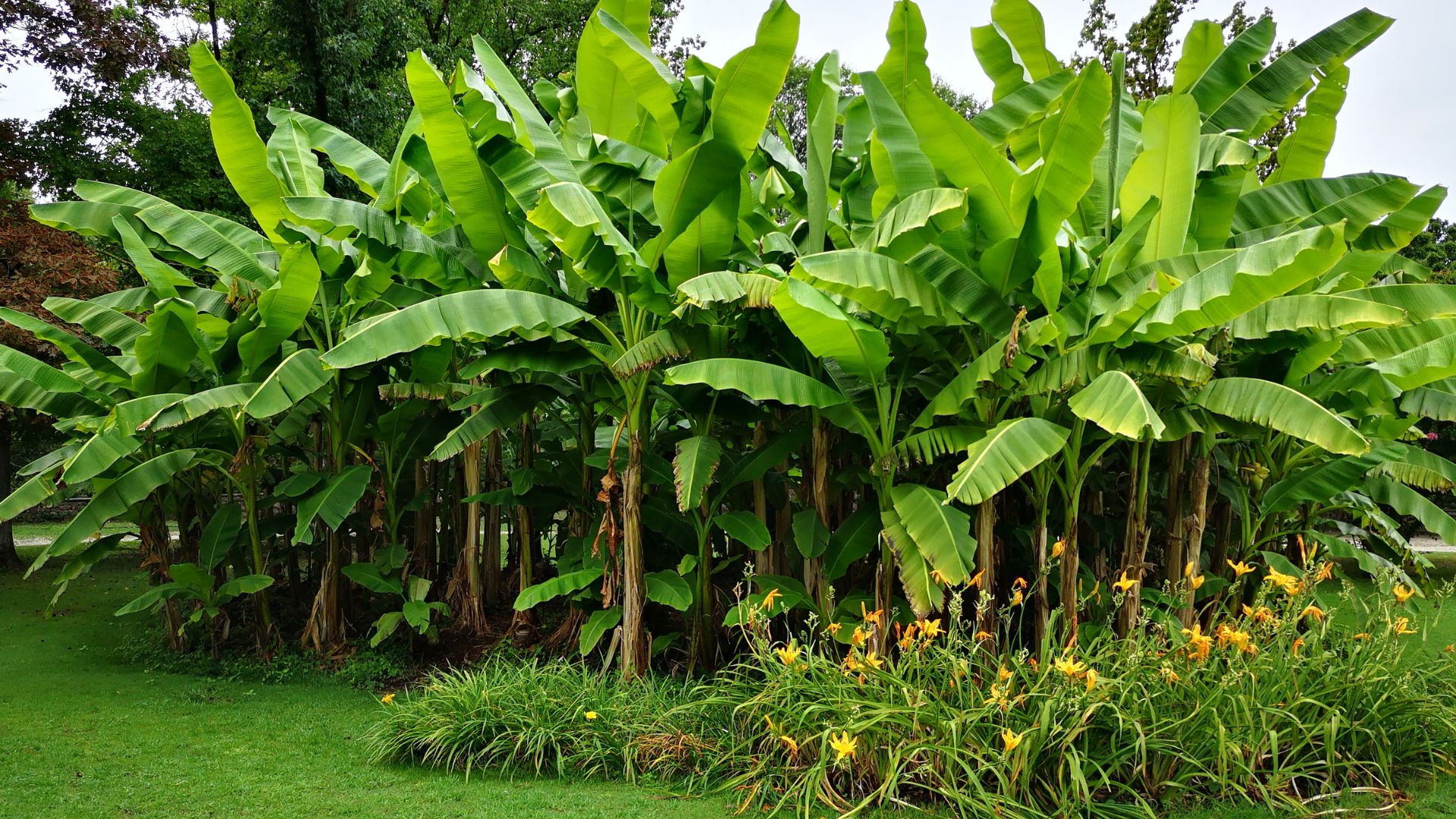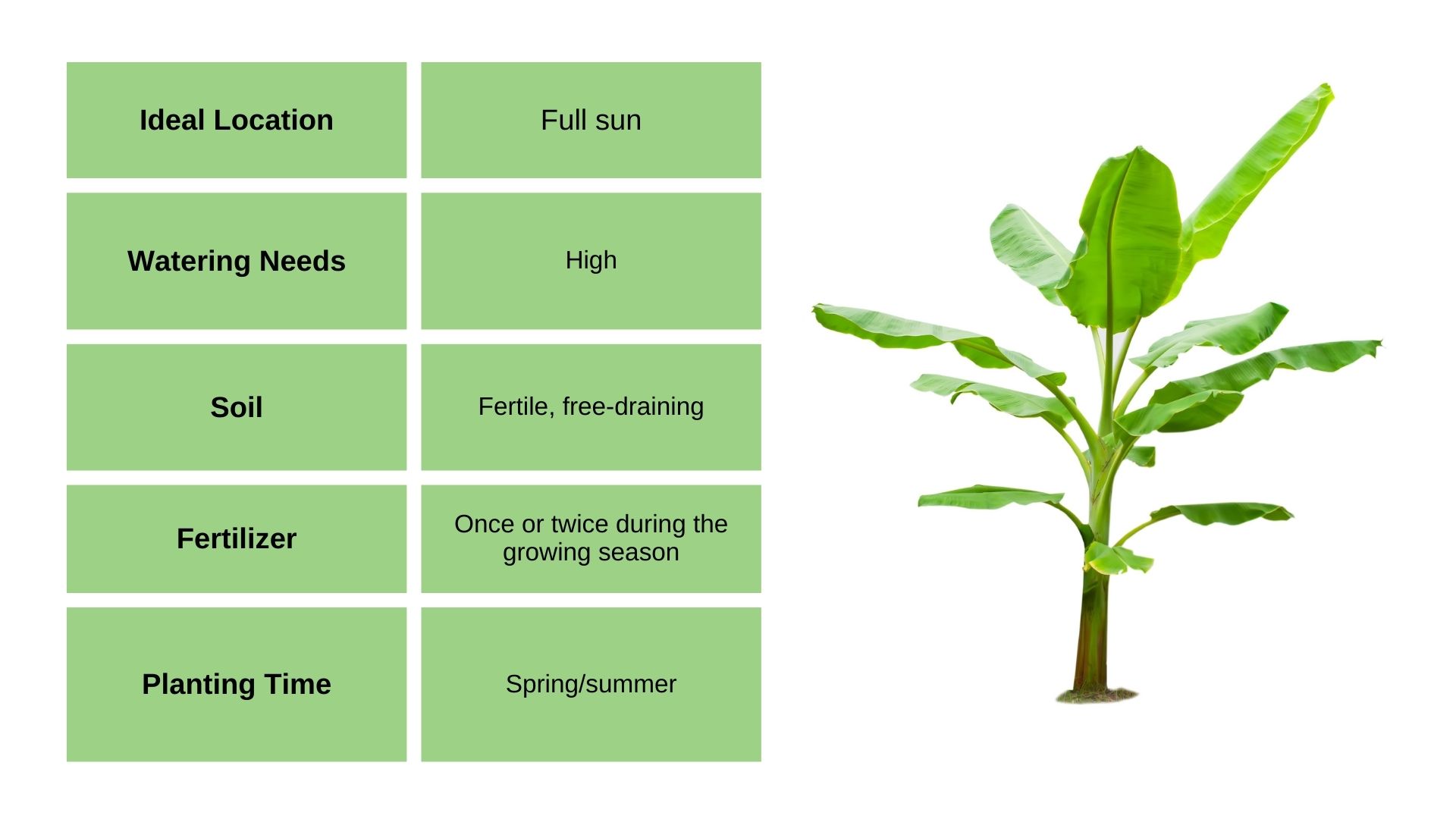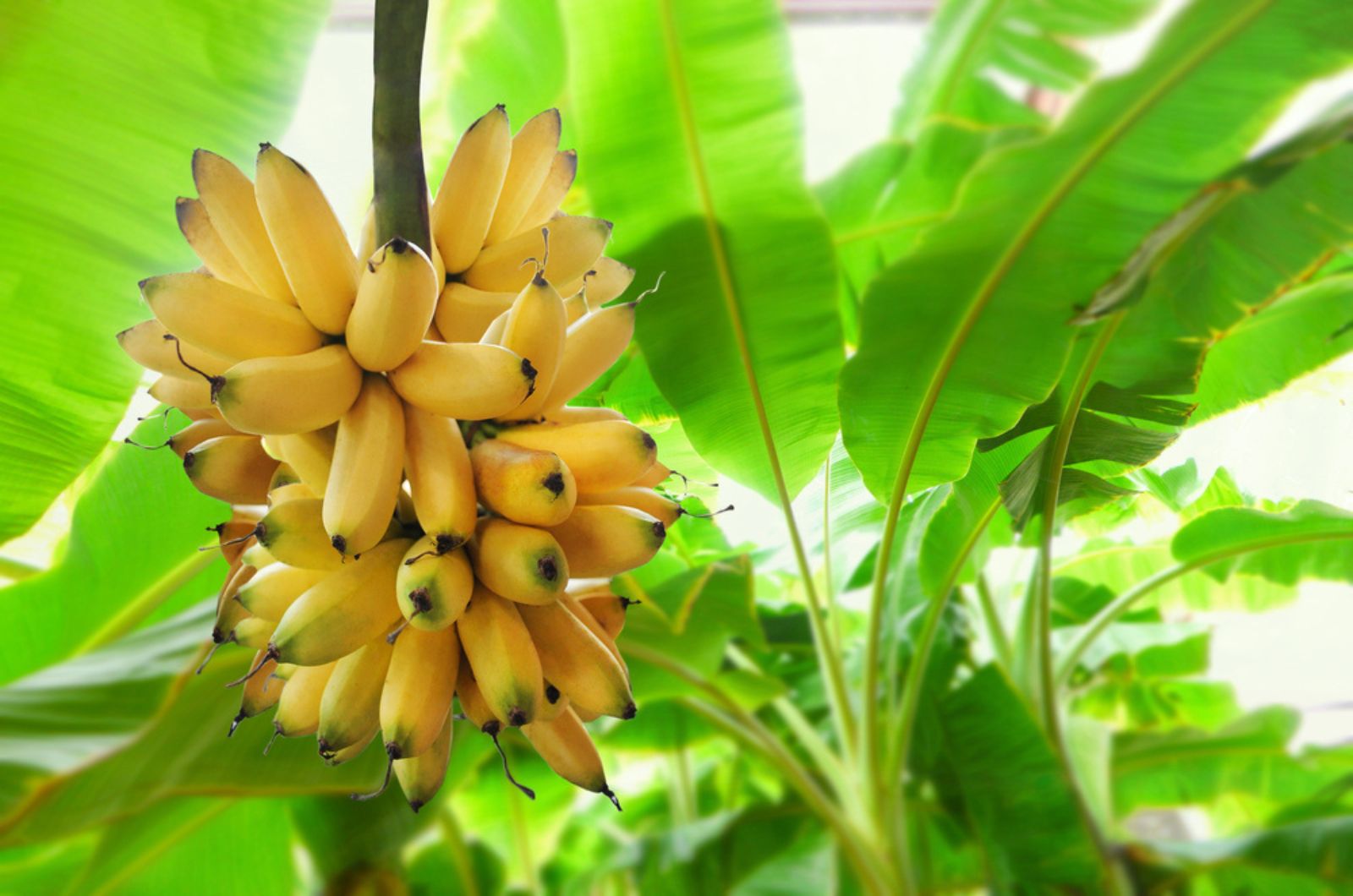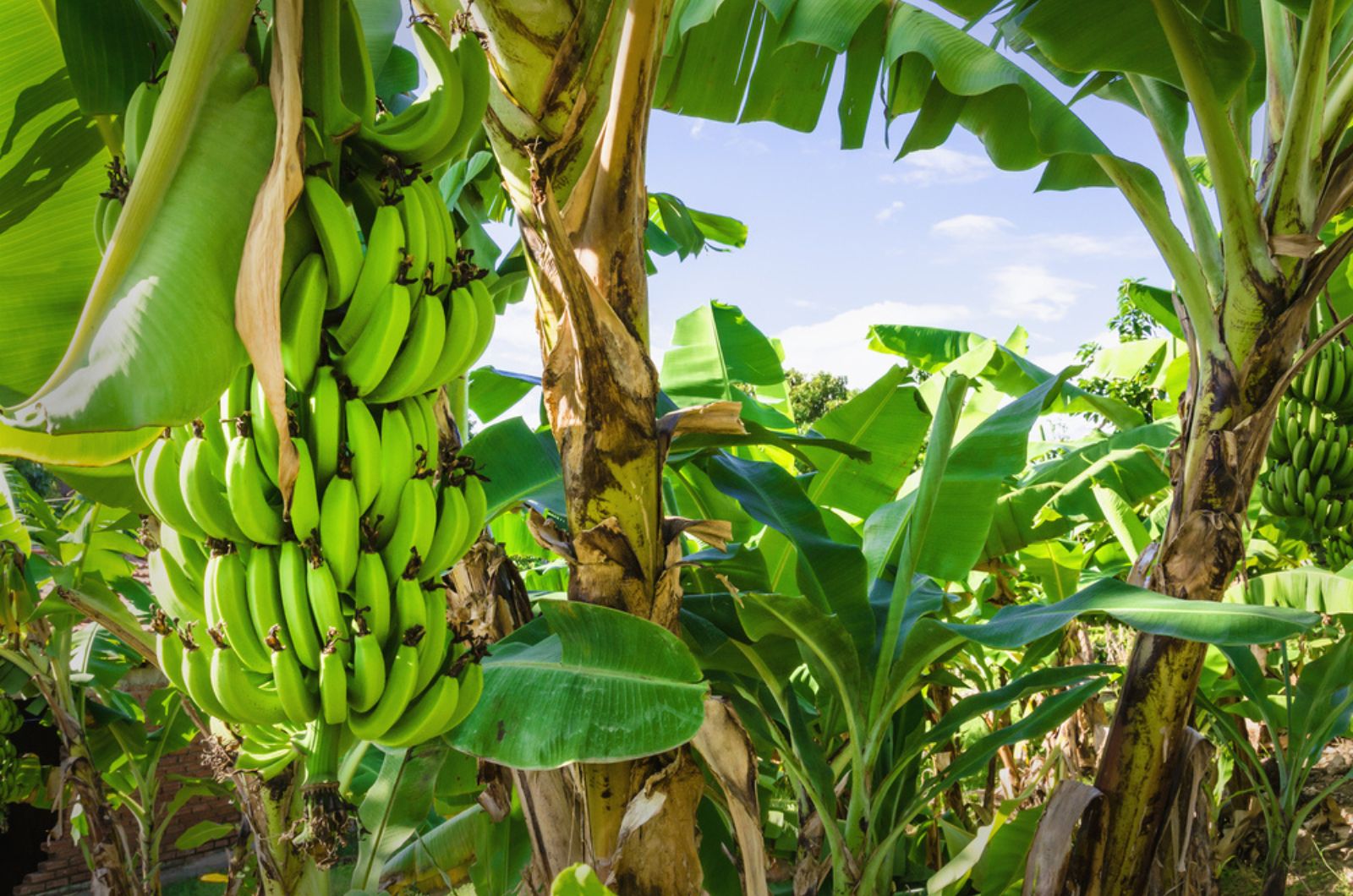When someone mentions banana plants, I’m sure many of you think of hot temperatures and beaches in tropical parts of the world.
Interestingly, bananas are frequently cultivated in gardens for their spectacular massive foliage rather than their fruits. These plants do love warmer temperatures but the good news is that there are some cold hardy varieties.
Therefore, you can get a tropical vibe in your landscape even if you live in a cooler climate.
In this article, I’ll show you how to grow cold hardy banana trees! Let’s get started!
Why Grow Banana Trees?
The main reason to grow bananas is to get a tropical garden design. We are all enchanted by the beauty and uniqueness of these gardens.
Unfortunately, those who live in cool climates can often only dream of this design. Tropical plants are mainly grown indoors because we can control conditions.
But you don’t need to give up on a tropical garden! Cold hardy banana trees can thrive outdoors and even successfully overwinter in some climates.
The lowest these plants can withstand are the conditions in USDA hardiness zone 4. If you live in a zone below 4, you’ll need to ensure winter protection.
The only drawback of growing these trees in cold climates is that you won’t get any fruits. Edible bananas need warm temperatures to generate blossoms and fruits.
Cold hardy bananas belong to the Musa genus and many of the species are actually inedible. (1)
For me, the large, oblong, bright green foliage is the number 1 reason why these plants deserve a spot in the garden.
A Guide To Growing Banana Trees
One of the most important things to know about these trees is that they have a fast growth rate. The mature size of this tree is approximately 15 feet and it can spread up to 8 feet.
These two features define the first condition you must ensure: space! Make sure the spot you choose is large enough to fit the canopy when it reaches the final growth stage.
Massive leaves create shade, so if you need a plant for around a pool, this is the perfect one!
If you have a smaller garden you want to turn into a tropical paradise, you can plant your banana tree in a container!
Light And Watering
The majority of banana species thrive in full sun and must receive at least 6 hours of direct sunlight per day.
However, there are some varieties that benefit from partial shade because their leaves can scorch if exposed to harsh sun rays.
You’ll need to keep the banana tree soil consistently moist. Water it regularly, especially in periods of drought. However, never allow the water to accumulate in the soil because overwatering your banana tree can lead to severe problems.
Leaf and stem discoloration and deformation are the typical signs of excess water in banana plant soil.
Soil And Fertilization
Banana trees aren’t picky over their growing medium and will thrive in different soil types. For the best results and the healthiest growth, I recommend ensuring fertile and rich soil.
Banana plants can’t survive in waterlogged soils, so make sure the drainage is good.
Even though banana trees aren’t heavy feeders, they can benefit from a nutrient boost. This especially applies to container-grown bananas.
Feed these trees once or twice a month during the growing season. I recommend using fertilizers rich in nitrogen at the beginning of the season.
Fertilizers with higher phosphorus and potassium concentrations are better suited once your banana plant enters the flowering stage.
Planting Banana Trees
The first thing you need to do after you purchase your banana tree is dig a hole in the ground large enough to fit the root system.
Then, add some compost or well-rotted manure to the soil, cover the roots, and pack everything in well.
Your banana trees will be very thirsty after planting, so make sure you water them once or twice a week until they’re well-established.
Overwintering Banana Trees
The cold-hardy feature of these plants doesn’t really mean that they will survive the harshest winters. There are 3 methods you can use for overwintering these fantastic plants.
Method #1
Sub-zero temperatures can damage your banana trees, so to successfully overwinter them, you’ll need to ensure some protection.
If you want to keep your banana plant outdoors during the winter, first you need to cut its stems down to 2 feet. The best time to do so is after the first frost.
Take a wire basket, put it around the trunk, and fill it with straw or leaves to protect it from freezing temperatures.
Wrapping the stem in fleece or using burlap or bubble wrap is another way to help your bananas survive over winter. Finally, add a layer of mulch around the base of your banana tree.
This method works perfectly for the hardiest of the hardy bananas, the Musa basjoo, otherwise known as the Japanese banana.
Method #2
Another way to overwinter these plants is to lift them up off the ground and take them indoors.
Add some soil around the roots (not too much) and put it in a well-lit and warm room.
Method #3
If you don’t want to grow these trees indoors during the winter, you can cut off the leaves, add mulch to the top of the container, and protect the plant by wrapping it in fleece.
You can keep the plants in a dark spot with temperatures ranging from 40-50 degrees Fahrenheit. Banana trees will be dormant during the winter months, but never allow their soil to dry out entirely.
As you can see, you can add banana trees to your garden and create a tropical haven if you live in colder USDA zones. Just follow our guidelines for a thriving banana plant and enjoy the view!
References
1. Israeli, Y., & Lahav, E. (2016). Banana. Encyclopedia of Applied Plant Sciences (Second Edition)




